
© Richard Davies. (Click image for larger version)
Company Wayne McGregor
Autobiography
★★★✰✰
San Francisco, Yerba Buena Center for the Arts
8 March 2018
Gallery of pictures by Dave Morgan
waynemcgregor.com
sfperformances.org
www.ybca.org
Bay Area dance audiences really are a fortunate lot. In addition to the rich, thriving local dance scene, so many national and international artists regularly visit the region. Like British choreographer Wayne McGregor, whose compositions have graced San Francisco stages many times in recent years. Chroma was met with rousing, enthusiastic bravos (at least on the nights I was in the audience) when it was part of SF Ballet’s 2011 and 2012 repertory seasons, so it came as no surprise that the following year, McGregor was commissioned to create Borderlands on the company. McGregor’s work is also well known at San Francisco Performances, already presented three times in their annual dance series. Thursday night marked a fourth chapter with the West Coast premiere of Company Wayne McGregor in 2017’s Autobiography.
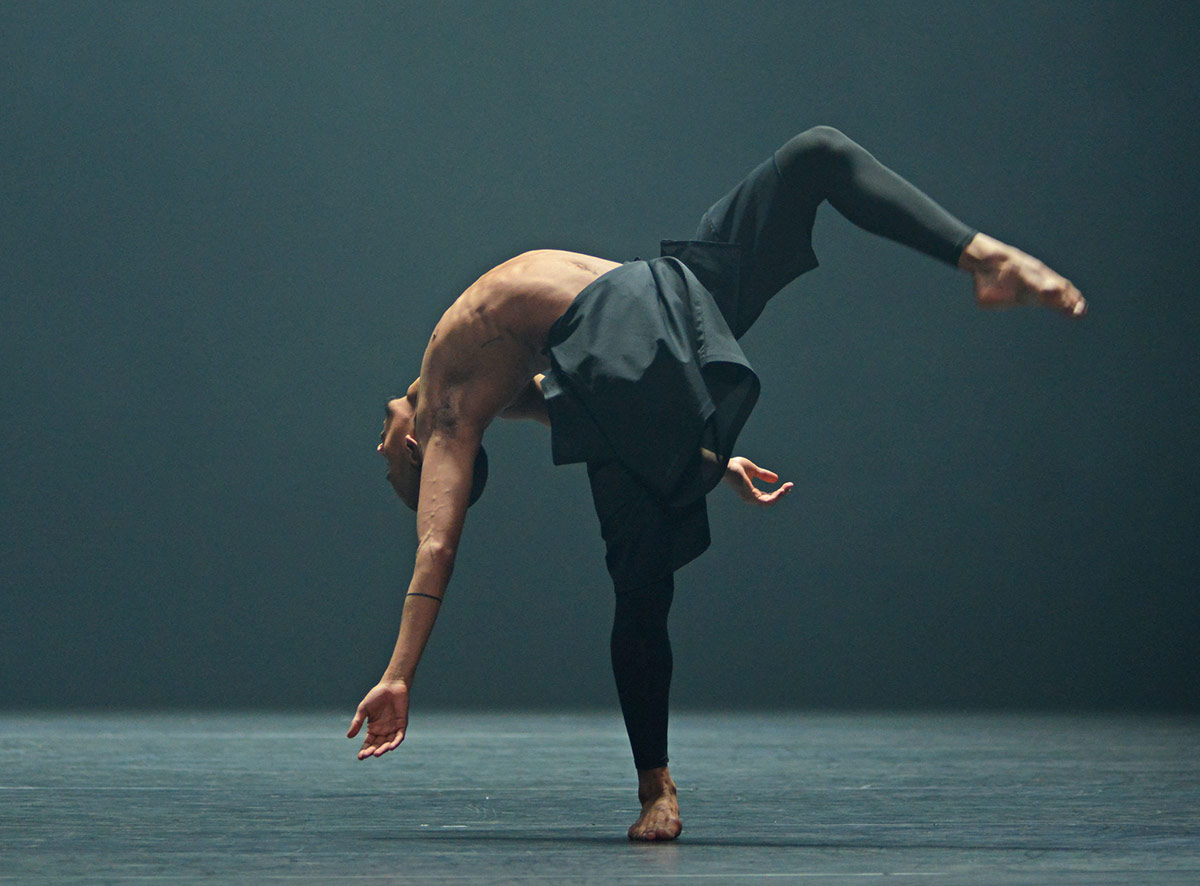
© Dave Morgan. (Click image for larger version)
Each time I’ve seen a McGregor work, the opening moments have absolutely transported me into the theatrical space. Massive white cube sets; mobile mixed media sculptures; unexpected lighting. So, when the house lights went down at Thursday’s opening performance, I was on the edge of my seat with anticipation. What sensory feast would launch Autobiography? McGregor’s, set designer Ben Cullen Williams, lighting designer Lucy Carter and musical collaborator Jlin did not disappoint. A grid of large steel geometric shapes hung from the ceiling; austere, modernist chandeliers presiding over the space. Soft white light emanated from the structure casting a glow on the stage’s billowing fog, like the early hours of the morning. Water sounds peppered the score, adding extra texture to the already dewy, misty mood. A single dancer navigated the slightly mysterious scene, his movements ephemeral as the haze around him. Sky-high leg extensions oozed musculature and control. But they were fleeting and followed by the whole body crumpling to the ground.
The compelling introduction suggested that a convincing set of artistic ideas might be in store. As the lengthy physical dissertation unfolded, some statements were successful, others, less so.
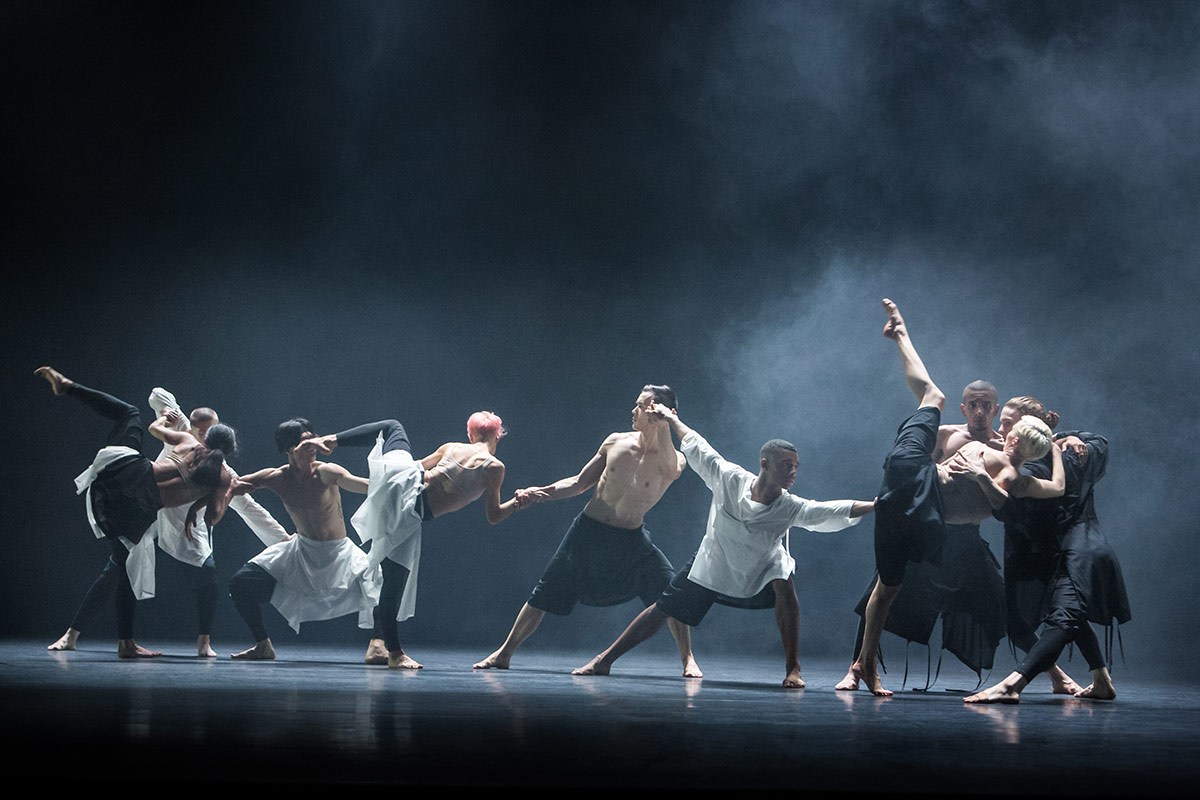
© Richard Davies. (Click image for larger version)
Ahead of the performance, I had learned that Autobiography is made up of twenty-three movement variations inspired by the twenty-three pairs of chromosomes in McGregor’s own genome along with other personal remembrances (the dance’s title becoming apparent). Prior to each Autobiography performance, a computer program decides which segments will be part of any given show and in what order they will be performed. And during the dance, names and numbers are projected indicating which phrase is up next – this particular iteration of Autobiography included 8 Nurture, 15 Instinct, 10 Nature and 16 World, to name just a few.
I love this idea of chance in performance. While it might be hard to see in a finished product, I find it fascinating to think about how the work may have looked different yesterday, how the dancers and crew navigate a new order from show to show, how freshness and vitality might emerge from randomness. And this particular implementation of fate felt like a cool intersection of generations – post-modern chance procedures of the mid-1900s meeting 21st century technology. So structurally, I was all in, but as for Autobiography’s overall concept, my reaction was mixed.

© Dave Morgan. (Click image for larger version)
Autobiography was by no means a literal scientific rendering of the genome. Though I think it’s fair to say that science was a significant contributor to the work. And from time to time, one could sense its presence in the choreography. The high octane, high velocity movement was undeniably McGregor, but there were moments, winning moments that hinted at the complexity and emotion of the scientific process. One full-cast section was imbued with X formations, evoking the X shape of an actual chromosome. Bodies were magnetically drawn into that cross, then they would scatter, and then the process would repeat, the X being re-formed by different dancers. Like what one might see under a laboratory microscope. Another large cast statement found the company moving slowly through space, articulating through their feet, palms stretched out in a posture of curiosity – carefully and meticulously searching for answers and clues. McGregor also struck an experimental tone with his approach to balletic vocabulary. In two separate sequences, he introduced some very formal ballet phrases and then slowly, played with turn out and threw the body off its center. Those steps evolved into something new through experimentation – it felt like an abstraction of the scientific process within a theatrical container.
As the piece went on, I did start to wonder about my observations. What if I hadn’t known in advance about Autobiography’s scientific influence? Would the biological undercurrent have read as clearly without that context? Would I have seen the movement as representative of something else? I don’t know. What I do know is that my viewership lens had already been focused in a particular way far before Autobiography began. I can’t decide whether that’s good, bad or completely neutral, but when it comes to making connections in performance, the ‘why’ is well worth some contemplation.

© Andres Uspenski. (Click image for larger version)
There were some standout moments (like those mentioned above), but generally I found that the vignettes didn’t seem all that different from one to the next. Yes, they were identified by names and numbers; yes, there were framed with distinct lights and scores. But choreographically, the movement looked much the same. Sometimes the speed varied, but that didn’t necessarily bring new physicality to the table, just new tempos. Don’t get me wrong, I very much enjoy McGregor’s movement and did here as well. The constant shifting of the body’s axis; the simultaneous exploration of curves and straight lines; torso isolations; level changes; the extreme extensions of the legs (it seems like a 180-degree standing side split is a pre-requisite to be in the company; it’s everywhere in the choreography). But I yearned for more variety. Maybe DNA/genome enthusiasts were able to pick up some additional subtleties, some further cellular detail and intricacy in the movement. But this genome novice saw an hour and twenty minutes of pretty similar choreography.
On the whole, Carter’s lighting was cool, fun and innovative. That is, with a few exceptions. In one instance, stark white flashes pulsed over and over again directly out into the audience, with an unforgiving, interrogative intensity. Bothersome for sure, but at least it was possible to withstand. Later was a different story. Twice, Autobiography featured moving lights, positioned at the back of the stage, their beams piercing into the audience. These lights pivoted from side to side, and when they came into your sightline, were absolutely blinding. The first time they were utilized, only one was present, so you could kind of duck to avoid it, but the closing vignette employed a number of these lights. Suffice it to say; I barely saw the final dance. Perhaps its choreography was very different and unique; I wouldn’t know. I’m all for pushing design boundaries, but making it difficult to look at the stage might be taking things a bit far.











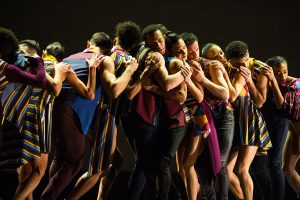
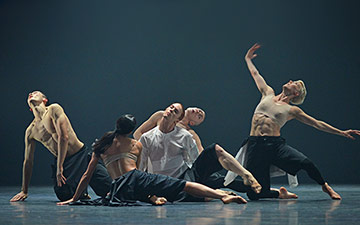
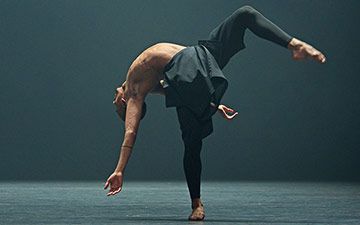
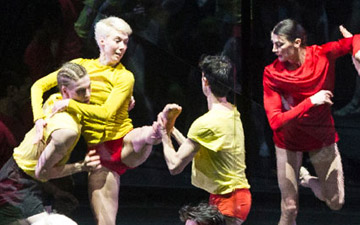


You must be logged in to post a comment.